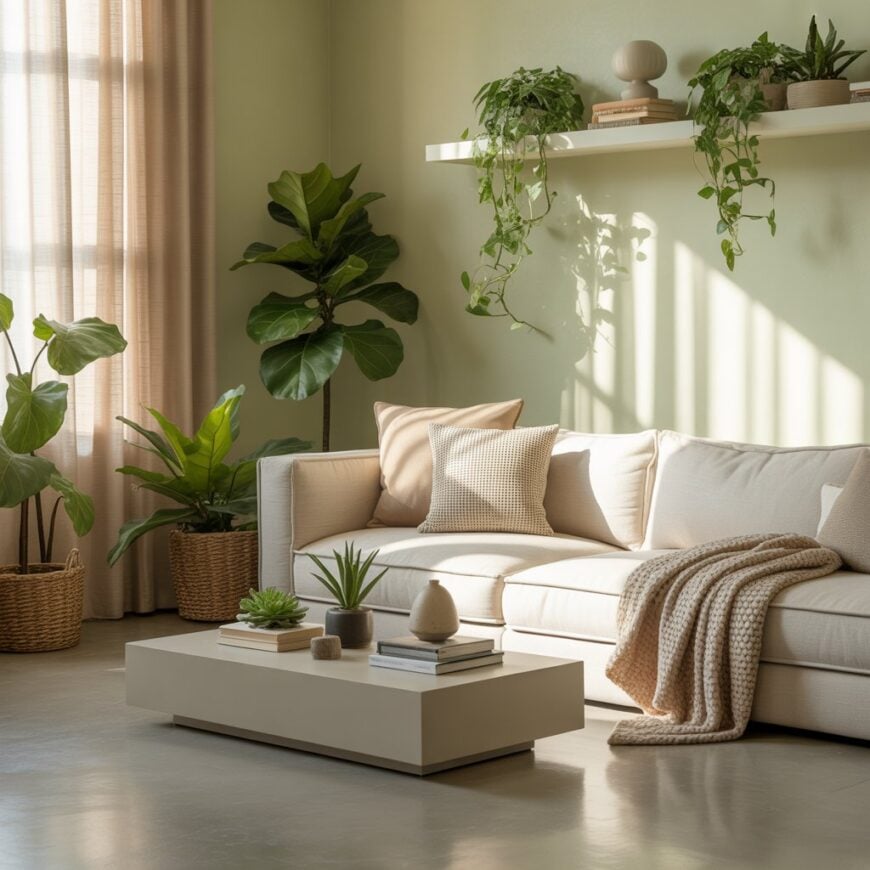
The decorating choices you make unconsciously communicate your stress management style and emotional needs. From the plants you nurture to the lighting you prefer, each element in your living space tells a story about your relationship with stress and your strategies for finding peace in a chaotic world.
AI usage: This post is theoretical in nature and so images used were created with the assistance of AI (Ideogram) in order to get relevant images.
In order to come up with the very specific design ideas, we create most designs with the assistance of state-of-the-art AI interior design software.
15. Presence of meaningful objects that provide comfort

When stress hits, you naturally turn to items that bring emotional security. Your home likely displays objects with personal history or sentimental value.
These comfort items reveal your coping strategy. You might keep family photos nearby or display heirlooms that connect you to positive memories.
The placement of these meaningful objects shows how you manage anxiety. They serve as visual reminders of stability and love during difficult times.
Your cherished possessions become stress-relief tools that ground you emotionally.
14. Use of warm lighting instead of harsh overhead lights

Your lighting choices reveal how you manage daily stress. If you rely on harsh ceiling lights, you might be overlooking a simple way to create calm in your space.
People who choose warm lighting over bright overhead fixtures tend to prioritize emotional well-being. You create cozy environments with table lamps, floor lamps, and soft ambient lighting.
This lighting preference shows you understand how your environment affects your mood and stress levels.
13. Inclusion of water features like small fountains
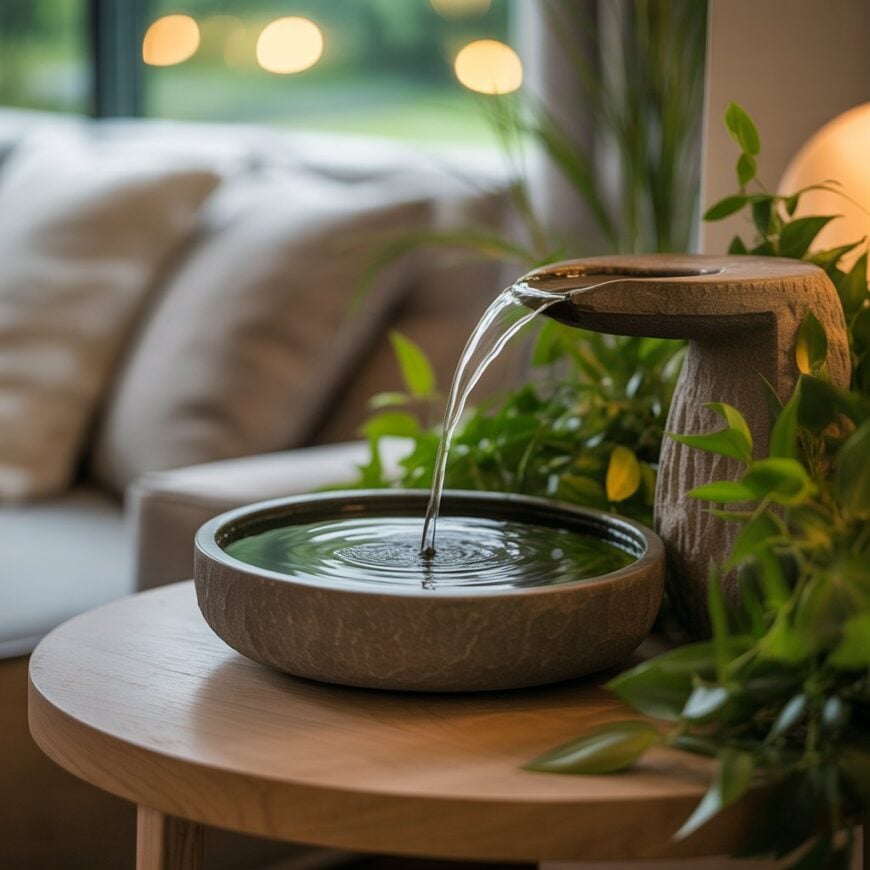
When you choose water features for your home, you’re showing a preference for natural stress relief methods. Small tabletop fountains or wall-mounted waterfalls indicate you value tranquility in your daily environment.
These features reveal you understand how gentle sounds can mask unwanted noise and create calm. You likely process stress through sensory experiences rather than avoiding stressful situations entirely.
Indoor water elements suggest you prioritize creating peaceful retreats within your living space.
12. Use of mirrors to open up and brighten spaces
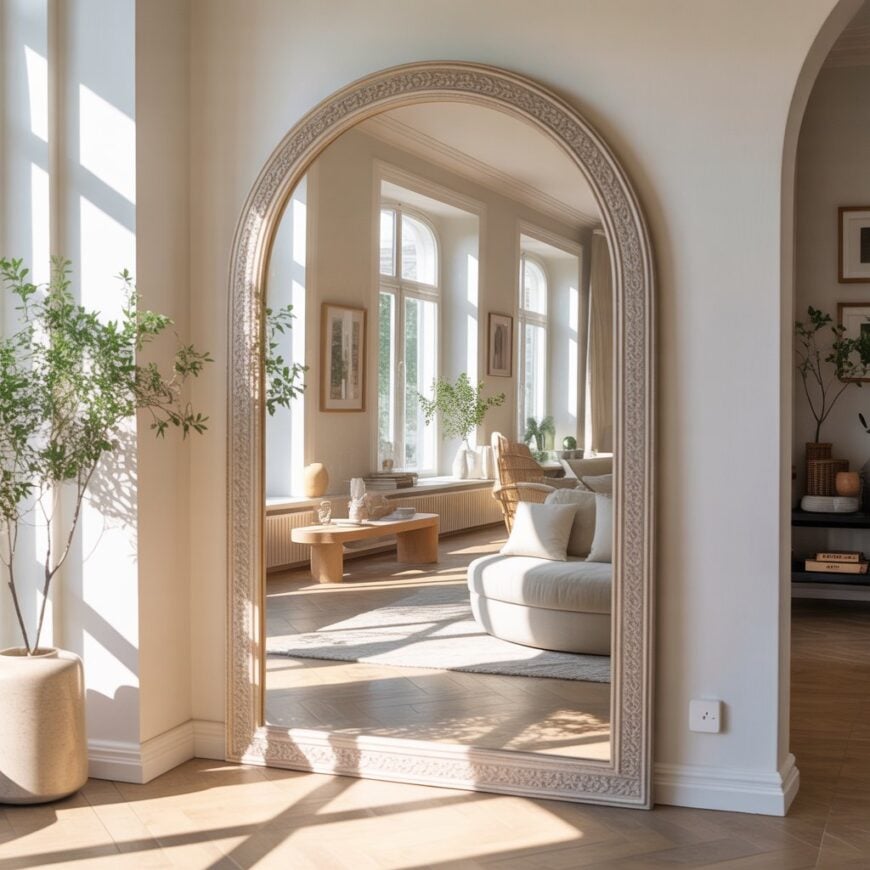
Your mirror placement choices reveal how you manage stress through your environment. If you position mirrors opposite windows, you’re actively working to maximize natural light and create calm.
Strategic mirror use shows you understand the power of visual space. You tackle cramped feelings by creating depth and reflection throughout your rooms.
Multiple mirrors suggest you value brightness as a stress reliever. This approach demonstrates your practical problem-solving nature when dealing with dark or small spaces.
11. Presence of soothing scents like lavender

Your choice to fill your home with calming fragrances reveals a proactive approach to stress management. You recognize that scent directly impacts your emotional state.
Lavender candles, diffusers, or dried sachets throughout your space show you prioritize creating a peaceful environment. You understand that aromatherapy can reduce anxiety and promote relaxation.
This intentional use of calming scents indicates you take preventive measures against stress rather than waiting until you’re overwhelmed.
10. Use of soft, cozy textiles and cushions
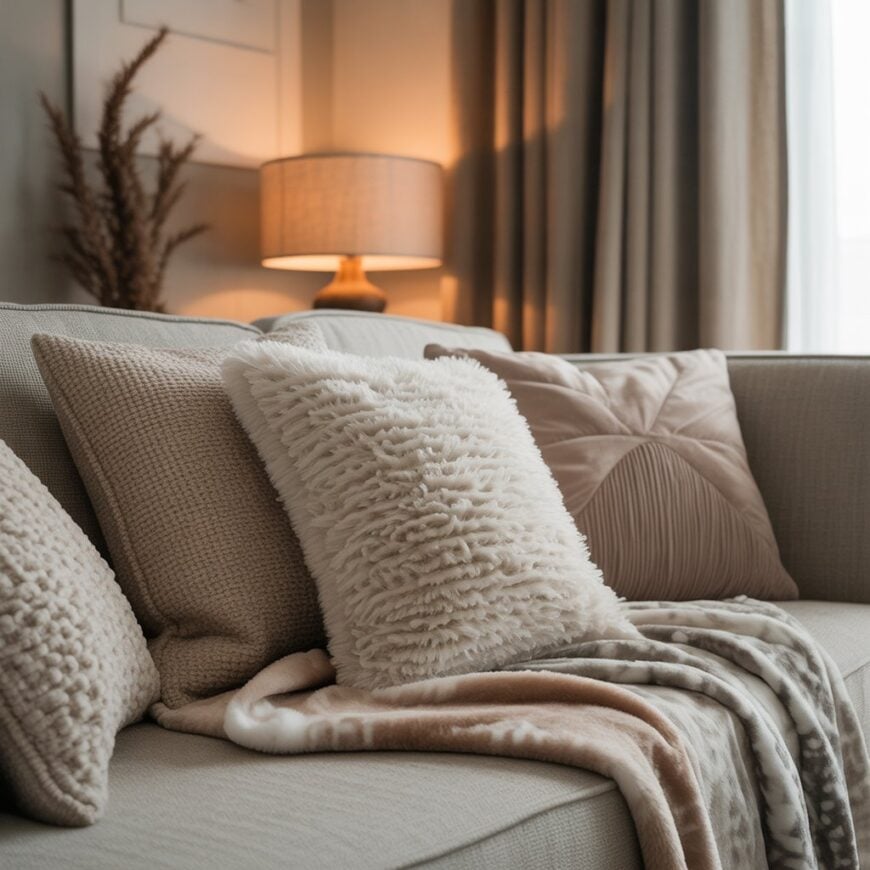
When stress builds up, you naturally gravitate toward comfort. Your choice to fill spaces with plush throw blankets and soft cushions shows you seek physical comfort as emotional relief.
Surrounding yourself with cozy textiles creates a protective cocoon. You use these soft materials to transform harsh spaces into gentle retreats where you can decompress.
The textures you choose reflect your coping style. Velvet cushions and chunky knit throws suggest you handle stress by creating nurturing environments that soothe your senses.
9. Spaces dedicated to relaxation like reading nooks

When you create dedicated relaxation spaces like reading nooks, you’re showing your proactive approach to stress management. These thoughtful corners demonstrate that you prioritize mental wellness and understand the importance of having a peaceful retreat.
Your reading nook reveals your need for quiet moments away from daily pressures. Whether it’s a simple chair with good lighting or an elaborate window seat with soft cushions, these spaces show you value mindfulness and self-care as stress-relief tools.
8. Furniture arranged for easy flow and comfort

Your furniture placement reveals how you manage daily stress. When you arrange pieces for smooth movement, you show a preference for reducing daily friction.
People who maintain clear pathways avoid unnecessary obstacles. You likely plan ahead and eliminate sources of frustration before they become problems.
Strategic furniture positioning indicates emotional awareness. You understand that physical comfort directly impacts mental well-being and stress levels in your living space.
7. Display of personal art that soothes emotions

Your choice to display calming artwork reveals your stress management approach. You actively seek visual elements that promote relaxation and emotional balance.
Soft landscapes, gentle abstracts, or serene photography on your walls indicate you prioritize mental peace. These pieces serve as visual anchors during stressful moments.
The placement of soothing art in high-traffic areas shows you understand the importance of accessible calm. You create intentional moments of tranquility throughout your daily routine.
6. Organization that reflects control and order
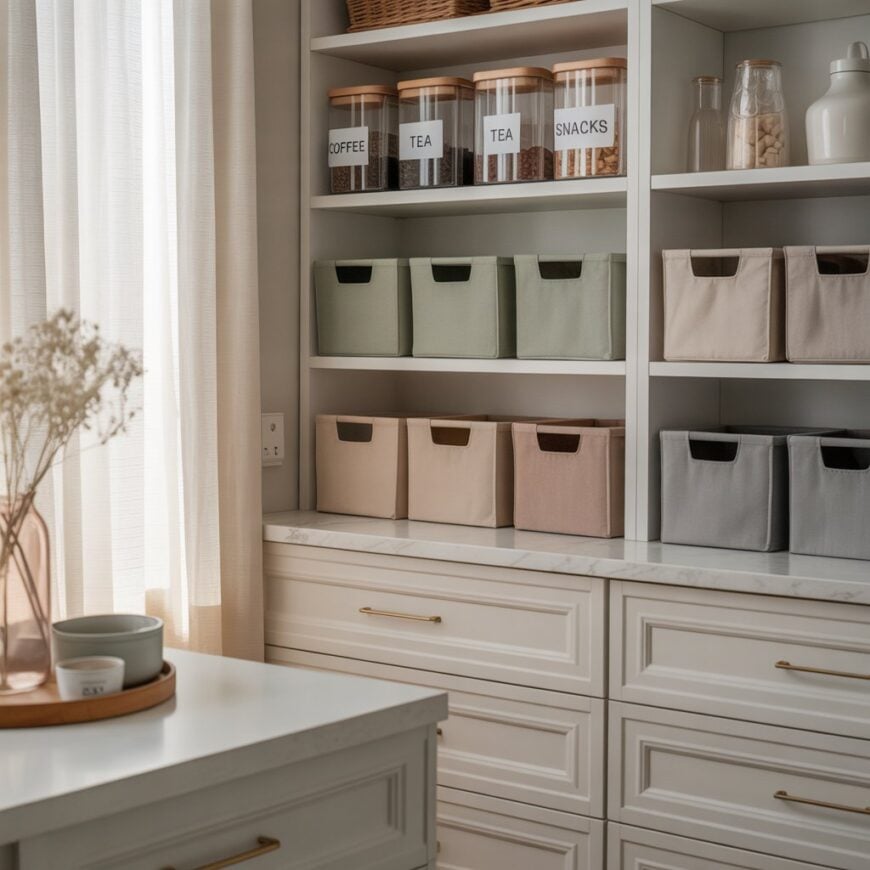
Your organization systems reveal how you manage stress through structure. When you keep everything in designated places, you’re creating predictable environments that reduce anxiety.
Meticulously labeled containers and color-coded storage show you handle stress by imposing order on chaos. You find comfort in knowing exactly where things belong.
Your organized spaces reflect a desire to categorize thoughts and experiences. This structured approach helps you process stressful situations more methodically and maintain emotional stability.
5. Use of nature-inspired decor elements

When you fill your space with driftwood, houseplants, or stone accents, you’re showing a healthy approach to managing pressure. These natural elements create a calming atmosphere that helps you decompress.
You likely seek balance when overwhelmed. Natural textures and organic materials provide grounding that artificial decor cannot match.
Your choice to bring outdoor elements inside reveals an intuitive understanding of what soothes your mind during difficult times.
4. Incorporation of natural light

Your relationship with natural light reflects your stress management approach. People who prioritize maximizing sunlight in their homes typically handle pressure more effectively.
You might use sheer curtains instead of heavy drapes. This choice shows you seek gentle solutions rather than shutting out challenges completely.
Strategic mirror placement to amplify daylight indicates forward-thinking stress management. You understand that small changes create meaningful improvements in your daily experience.
Light-colored walls and reflective surfaces suggest you actively work to brighten difficult situations rather than accepting them passively.
3. Minimalist design with less clutter

Your minimalist decor choices reveal a calm, organized approach to stress management. Clean lines and uncluttered spaces show you prefer simplicity over chaos.
When you choose functional pieces over decorative excess, it demonstrates your ability to focus on essentials. This reflects how you likely handle stressful situations by eliminating unnecessary complications.
Your reduced color palette and spare use of accessories suggest you find peace in order. You probably manage stress by creating structure and removing overwhelming elements from your environment.
2. Presence of indoor plants to reduce stress

Your choice to fill your space with greenery speaks volumes about your stress management style. Indoor plants naturally reduce cortisol levels and create a calming atmosphere.
You likely handle stress by seeking natural remedies and peaceful environments. Spider plants, pothos, and snake plants are popular choices for stress relief.
Research shows that caring for plants provides a sense of purpose and routine. This suggests you prefer proactive approaches to managing daily pressures rather than reactive solutions.
1. Use of calming colors like soft blues or greens
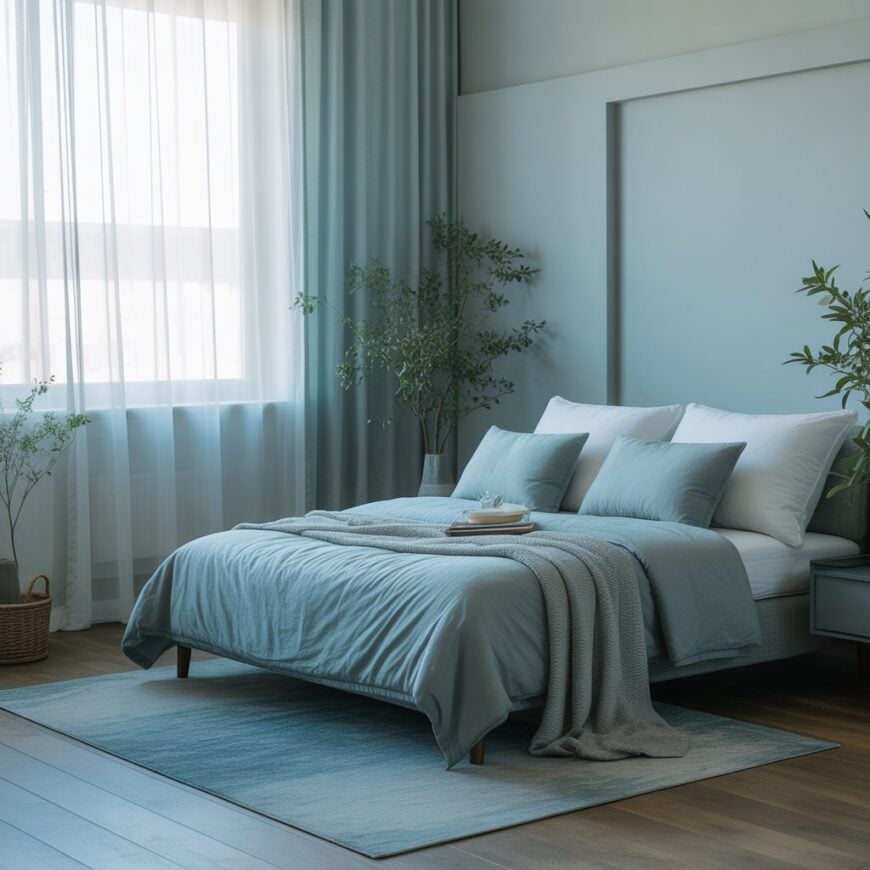
Your color choices reveal how you cope with daily pressures. If you gravitate toward soft blues and gentle greens in your decor, you likely prioritize creating peaceful environments to manage stress.
These cool tones naturally slow your heart rate and lower blood pressure. You understand that your surroundings directly impact your mood and well-being.
People who choose calming colors typically handle stress through mindful relaxation rather than high-energy activities. Your walls become a tool for emotional regulation.






